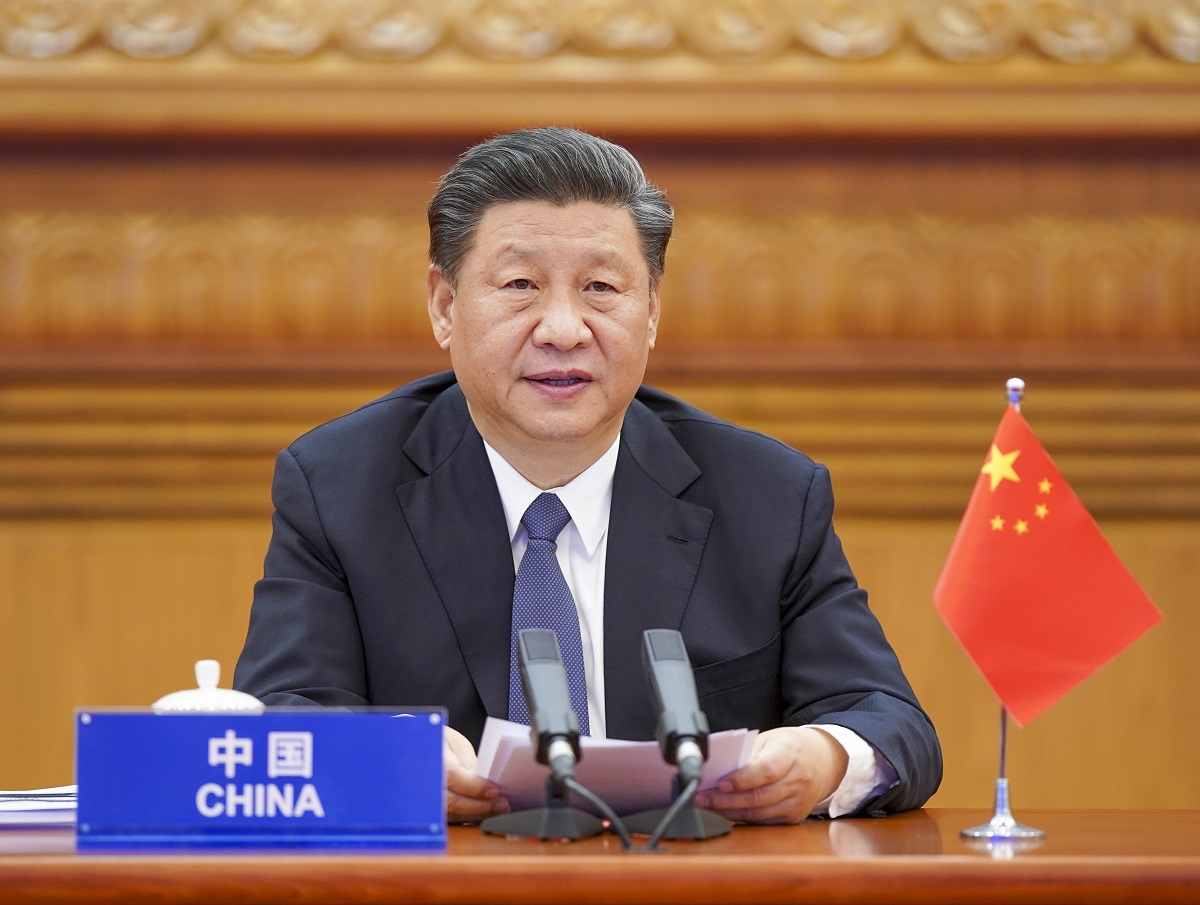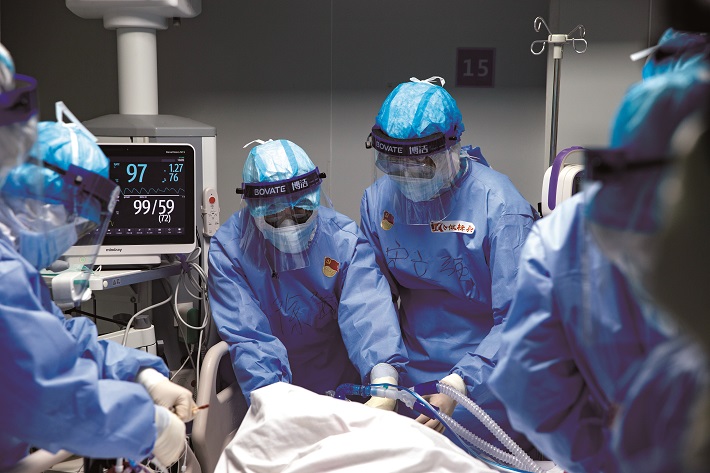A Global Circle of Wagons

So far, China has set a good example for the global fight against COVID-19. The country’s strict and effective prevention and control efforts not only safeguarded the lives and health of its own people, but also greatly contributed to global public health. However, as the novel coronavirus outbreak is easing its grip in China, it is spreading to every continent and was declared a pandemic by the World Health Organization (WHO) on March 11, with its epicenter shifting to Europe. On March 26, Chinese President Xi Jinping attended a special Group of 20 (G20) leaders’ summit to coordinate multilateral response to the pandemic in Beijing. Xi called for a resolute all-out global war against the COVID-19 outbreak, adding that it is imperative for the international community to strengthen confidence, act with unity and work together in a collective response. Xi also emphasized that countries need to leverage and coordinate their macro policies to counteract the negative impact and prevent the world economy from falling into recession.
Wuhan in Recovery
China has struggled through the most difficult period of the coronavirus outbreak, with new infections continuing to decline in early March. The situation on the virus containment in Hubei, the hardest-hit province and the epicenter of the COVID-19 outbreak in China, especially its capital city Wuhan, has further improved. By mid-March, spread of the infectious disease was essentially contained in Wuhan and other parts of Hubei Province.
The rate of recovery among patients in Wuhan, as well as across the entire country, has continued to increase. On March 3, the number of cumulative recoveries in Wuhan surpassed the number of remaining infections. On March 6, Wuhan slashed the daily increase of confirmed cases to below 100, down from a peak of more than 13,000 in early February. By March 10, all of the 16 temporary treatment centers in the city had closed. By the end of March 18, a total of 70,420 patients had recovered and been released from hospitals nationwide, including 57,678 in Hubei. By the same time, regions in Hubei outside of Wuhan reported no new infections for two weeks, and Wuhan reported zero new cases of coronavirus for a 24-hour period, its first day without a new infection since lockdown on January 23.
As the epidemic situation markedly improved in Wuhan, the first group of 3,787 medical workers in 49 medical assistance teams dispatched to the city began returning to their homes on March 17. During the COVID-19 outbreak, 346 medical teams were mobilized to aid prevention and treatment efforts in Wuhan. The teams were comprised of over 42,600 medical personnel including 19,000 professionals dedicated to treating severely ill patients. According to Chinese authorities, medical teams from across the country that have accomplished their assistance missions will continue to retreat from Wuhan in a gradual, orderly and safe manner. Those still treating patients may stay for some time, and those treating critically ill patients will be the last to leave.
With the virus basically curbed, regular life and orderly resumption of work and production in Wuhan are gaining momentum. On March 18, the local disease prevention and control task force announced a slow rollout of residents in Wuhan communities determined “infection-free” being allowed to engage in outdoor activities inside residential blocks.
According to guidelines released by the task force, rural areas of Wuhan labeled as free of the virus are permitted to restore normal behavior and launch agricultural production. Transportation of agricultural materials was ordered to commence smoothly as relevant businesses resume full operations. If a residential community maintains an “infection-free” status for more than a week, its inhabitants can begin resuming more outdoor activities. Convenience stores, drugstores and small-sized food markets in such communities can resume business after meeting sanitary requirements, implementing disinfection measures and conducting health checkups of sellers, among other precautionary measures. As of the end of March 19, a total of 5,607 residential communities in Wuhan were deemed free of infection, 78.9 percent of the total. Nearly 95 percent of local rural villages, 1,844 in total, were also labeled “infection-free.”

Medical workers are performing a tracheal intubation, which exposes them to the risk of infection, for a COVID-19 patient in critical condition at Huoshenshan Hospital in Wuhan, capital of Hubei Province. by Chen Jian/China Pictorial
China’s Resolute War Against the Virus
Since the COVID-19 outbreak, China’s top leadership has spared no efforts to control and prevent the epidemic. During his meeting with WHO Director-General Tedros Adhanom Ghebreyesus in Beijing on January 28, Chinese President Xi Jinping emphasized that the Chinese government’s top priority was people’s safety and health.
On March 10, President Xi Jinping inspected Wuhan, Hubei Province, pledging a continuous fight after prevention and control efforts “turned the tide.” The president’s inspection of Wuhan included a visit to Huoshenshan Hospital, a provisional hospital dedicated to treating severely ill COVID-19 patients, and Donghu Xincheng residential community, where he greeted people quarantined in their homes. During his trip to Wuhan, Xi visited patients, medics, community residents and workers, police officers, military personnel, officials and volunteers who had been fighting the virus.
At Huoshenshan Hospital, the first stop of his inspection, Xi praised medical workers as “the most beautiful angels” and “messengers of light and hope.” He talked with patients through video and expressed wishes for their quick recovery. In Donghu Xincheng residential community, Xi learned about the community’s efforts to prevent and control the epidemic and ensure supply of daily necessities for local residents. He also expressed gratitude to community residents and front-line workers.
After the field inspection, Xi chaired a teleconference in which he delivered an important speech. Xi declared that initial success had been achieved in stabilizing the situation and turning the tide. The positive trend in preventing and controlling the novel coronavirus outbreak would not have been achieved without sacrifice, devotion, perseverance and great efforts from all of the people in Wuhan. The concrete actions of Wuhan people testified to the strength and spirit of China, as well as Chinese people’s love for family and nation. Xi also stressed that the disease is a big test of the country’s governance system and capacity, adding that the authorities should learn from experience gained in improving the governance system.
Xi’s visit to Wuhan signaled a new stage in the fight against the virus. Not long ago, China was the hardest-hit place on the planet, but the concerted efforts of the Chinese people evolved the country into a stronghold in the global war against the infectious disease. The president’s visit consolidated faith that the virus can be defeated, and marked the country shifting its attention from fighting the disease at home to reaching out to help on the global front.
United Efforts to Fight a Common Foe
Since the COVID-19 outbreak, China has actively cooperated and exchanged information with the WHO and other countries. It quickly shared the full genome sequences of the new virus after the pathogen was identified on January 7. The WHO declared that the tremendous collective will of the Chinese people helped gain a few weeks that were very important for the world. United Nations Secretary-General Antonio Guterres expressed gratitude to the Chinese people who sacrificed many aspects of their normal lives to impede the spread of the virus.
Viruses respect no borders. Today, COVID-19 continues spreading throughout the world. By mid-March, it had crept into more than 160 countries and regions. As of March 19, more than 230,000 cases of COVID-19 had been reported globally, among which 9,840 people lost their lives. On March 19, the coronavirus death toll in Italy overtook China, as hospitals became overwhelmed and the government prepared to prolong emergency lockdown measures.
In the spirit of openness, transparency and responsibility, China has been working closely with the WHO, intensifying analysis and predictions of global epidemic development, improving measures for dealing with risk of imported infections and strengthening exchange and cooperation with other countries.
China has maintained a strong sense of responsibility to build a community with a shared future for humanity at the critical moment of global response to the epidemic. It is actively participating in regional and international cooperation to fight the outbreak and extending a helping hand to other countries. China has called for greater efforts to improve coordinating mechanisms for epidemic control strategies with other countries, enhance sharing of experience in prevention and treatment and advance joint scientific research.
By March 21, China had shared its experience in fighting the outbreak with numerous countries and dispatched medical teams to Italy, Iran, Iraq and Serbia to assist the fight against the virus. The Chinese government shipped supplies to 82 countries, the African Union and the WHO including reagent kits, masks and protective suits. Many of the relief packages have already arrived in recipient countries. Many Chinese cities, enterprises, and nongovernmental organizations are also working to provide medical supplies and other necessary assistance for other countries.
“China created a window for the whole world to get ready and get ready fast,” said Bruce Aylward, a Canadian epidemiologist and leader of the WHO-China Joint Mission on COVID-19. The COVID-19 outbreak is a pandemic demanding international collaboration across national boundaries, ideologies, political systems and cultural values. Global cooperation, information sharing, scientific work and epidemic control experience are all needed to fight the common enemy of all humans. In the face of a pandemic, multilateral cooperation has become about more than just public health — it serves as a critical test of multilateralism and of the ability of the world to move toward a shared and brighter future for all.